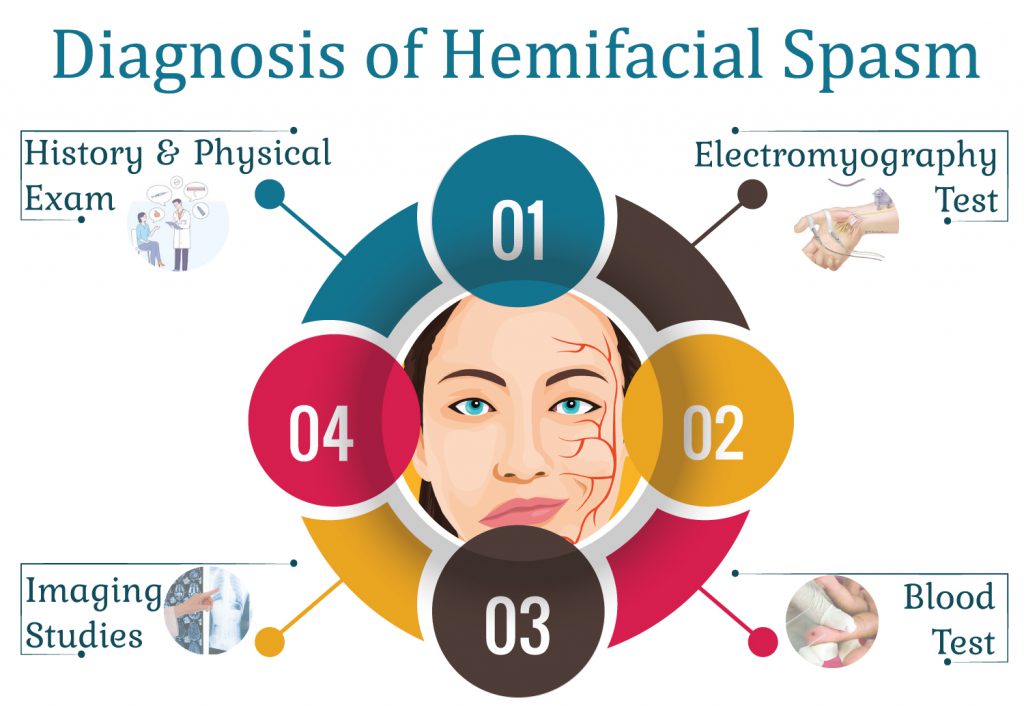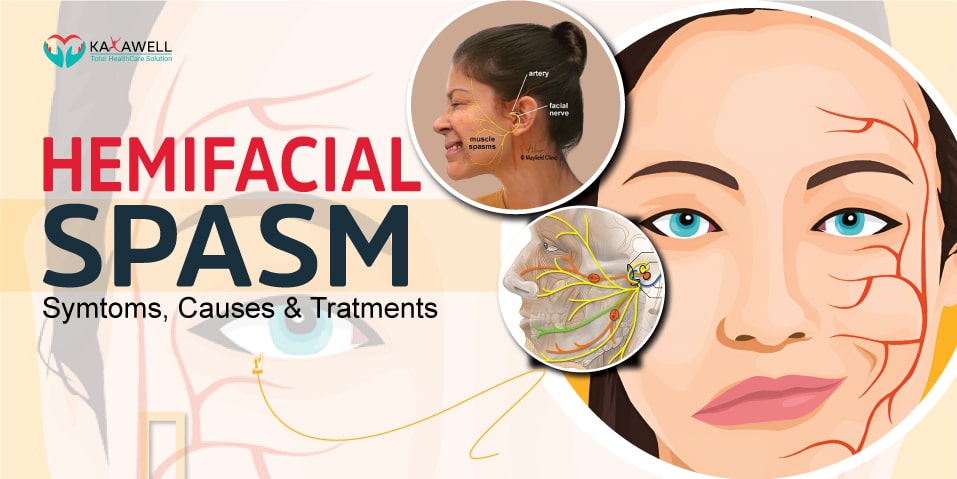You might have heard of hemifacial spasm, but you might not know what it is. Hemifacial spasm is a condition that affects the muscles on one side of the face. It can cause the face to cramp or spasm.
The cause of hemifacial spasms is not precisely clear. However, experts believe a problem with the facial nerve primarily causes it. Left untreated, it can cause uncontrolled muscle contractions, leading to facial disfigurement.
What Is a Hemifacial Spasm?
It is a condition that causes the muscles on one side of your face to contract involuntarily. It can be excruciating and can interfere with your ability to speak, eat, and drink.
There are several causes for hemifacial spasms, but the most common is a lesion or tumour on the facial nerve. Other causes can include head injuries, multiple sclerosis, and strokes.
Most experts agree that it is caused by a structural defect in the nerve, while others think it may be caused by a problem with the blood vessels that supply the nerve.
There is no one-size-fits-all treatment for hemifacial spasms. Your doctor will likely start by prescribing medication to help relieve the symptoms. If medication doesn’t work, surgery may be an option.
Read More: Facts And Importance Of AB Negative Blood
Hemifacial Spasm: Understanding the Causes
A hemifacial spasm can affect your upper and lower facial muscles and cause your eyelids to close wholly or partially. There are several different causes of hemifacial spasms, including:
The good thing about Hemifacial spasms is that it’s a rare condition (<1 in 10,000). But there should always be a reason for concern if you experience consistent facial twitching or pain. Near 8 in 10 Hemifacial Spasm cases are from facial nerve compression from an underlying blood vessel. It disrupts normal nerve signals, leading to involuntary muscle contractions. Although typically causing temporary paralysis, Bell’s palsy can rarely lead to hemifacial spasms as the nerve recovers. Other less common causes include Benign tumours near the facial nerve, Arteriovenous malformations (AVMs) or Abnormal tangles of blood vessels, Strokes, and Multiple sclerosis.
- Most Common Hemifacial Spasm Cause: Facial nerve compression from blood vessels
- Least Common Hemifacial Spasm Causes: Bell’s palsy, AVMs, Tumors, and Strokes
Whatever the cause, it’s always wise to consult an expert for timely diagnosis and treatment. Remember, early intervention can help manage symptoms and improve quality of life.
Symptoms of Hemifacial Spasm
A hemifacial spasm can be caused by several things, including nerve damage, stroke, and multiple sclerosis. If you’re experiencing any of the following symptoms, you may have hemifacial spasm:
- Twitching on one side of your face
- A sense of facial paralysis
- Irregular blinking or eye closure
- Difficulty chewing or swallowing
While Hemifacial spasms are not dangerous, you should consult a doctor if you experience these symptoms.
Diagnosis of Hemifacial Spasm
So how is hemifacial spasm diagnosed? It can be tricky because the symptoms can sometimes be mistaken for other conditions. But your doctor will likely do a few tests to rule out other possibilities and then give you a diagnosis. The diagnosis will more or less include steps in the following order:

1. History & Physical Exam
A physical exam should be performed before starting any treatment plan for facial spasms. A neurologist will perform a neurological examination to determine if there is a problem with the nerves, muscles, joints, or blood vessels involved.
A dentist may be consulted if you have had recent dental work done. If you have experienced trauma, it is essential to note whether it was severe enough to cause injury to the face. You should also note any history of allergies or previous reactions to medications.
2. Imaging Studies
MRI and CT scans are commonly used to evaluate brain structures and functions. These tests help identify structural abnormalities and damage to the brain. Both tests are noninvasive and do not use radiation. They provide detailed information about the size and shape of the brain and its surrounding structures.
3. Electromyography (EMG) Test
An EMG test is often used to diagnose disorders involving muscle control. Using electrodes attached to the skin, the doctor may record the electrical activity of the muscles. This helps distinguish between different types of nerve problems.
4. Blood Tests
Blood tests are sometimes necessary to confirm the diagnosis and rule out other causes of facial spasms. These tests may help identify conditions associated with abnormal levels of certain chemicals in the blood, including thyroid hormones, vitamin B12, folate, and iron. Some additional tests may be prescribed depending on symptoms or past medical history.
Treatment for Hemifacial Spasm
If you’re diagnosed with hemifacial spasm, your doctor will likely prescribe medication to help relieve the symptoms. Some surgical procedures can be done to help, but these should only be considered as a last resort.
The most common treatment is a medication called botox. In this, neurotoxin is injected into the muscle to help relax it. It’s effective it usually takes about a week for the muscle to relax, and the results can last up to six months. It blocks the release of chemicals that trigger muscle contraction.
Botox treatment effects last anywhere from three months to several years. Injections are given under local anaesthesia, and patients report no pain at the injection site. Botulinum toxin injections are not considered curative, but they help reduce symptoms’ frequency and severity.
Surgery and laser therapy are alternative treatments, but Botox is more common. Microvascular decompression surgery is a minimally invasive procedure that uses small metal clips to hold back the offending nerves. The goal of this technique is to relieve the pressure created by these nerves.
Hemifacial Spasm: Care at Home
If you have hemifacial spasms, you may need to take some steps at home to help relieve your symptoms. Here are a few things you can try:
- Apply a cold pack to the affected side of your face.
- Rest and relax as much as possible.
- Avoid anything that may stress or strain your facial muscles, such as chewing gum or smoking.
- If you wear glasses, ensure they fit properly and don’t put any pressure on your temples.
- If you have hemifacial spasms, your doctor may also recommend some specific at-home exercises to help relieve your symptoms.
Quick Recap
Hemifacial spasm is a rare disorder that affects the muscles on one side of the face. It can cause facial twitching, lip spasms, and eye problems.
There is no one-size-fits-all treatment for hemifacial spasms, but several treatments may help. Some people find relief from facial exercises or botox injections. Others may need surgery to correct a facial nerve injury.
Seeking therapy as soon as possible is crucial if you or someone you know is experiencing hemifacial spasms. Early diagnosis and treatment is the best way to get relief from this condition.
There are several treatments available, depending on the cause of the spasms. In some cases, medication can help to control muscle contractions. If the cause is a lesion or tumor, surgery may be necessary to remove it.
Hemifacial Spasm: FAQs
1. How do I know if I have Hemifacial Spasm (HFS)?
The first step in diagnosing HFS is to determine whether symptoms are present. If you experience one or more of the following symptoms, you should consult your doctor about a possible diagnosis of HFS:
– Facial muscle spasms
– Painful twitches
– Tingling sensations
– Numbness or weakness of facial muscles
2. What are the potential side effects of Botox injections?
Side effects of botulinum toxin injection therapy include temporary paralysis of the tongue and jaw, dry mouth, blurred vision, headache, neck stiffness, skin redness, swelling, bruising, eyelid drooping, and nasal congestion. These side effects resolve within 24 hours after the injection.
3. Can I get Botox injections without a prescription?
No, Botox injections require a prescription. You can obtain a prescription online, but it requires a visit to your doctor’s office.
4. What are Lip Muscle Spasms?
Lip muscle spasms occur when muscles around the lips become tight and painful. These spasms can sometimes cause problems eating or swallowing food, chewing, speaking, and breathing. Lip muscle spasms are caused by tension, anxiety, stress, and fear.
5. Is there anything else I need to know about hemifacial spasms?
Hemifacial spasms are not life-threatening or dangerous. However, they do require medical attention. Some people find them bothersome and seek treatment. Contact the National Institute of Neurological Disorders and Stroke, or visit their website. They provide additional information on the disease and its treatment.

Leave a Reply
You must be logged in to post a comment.